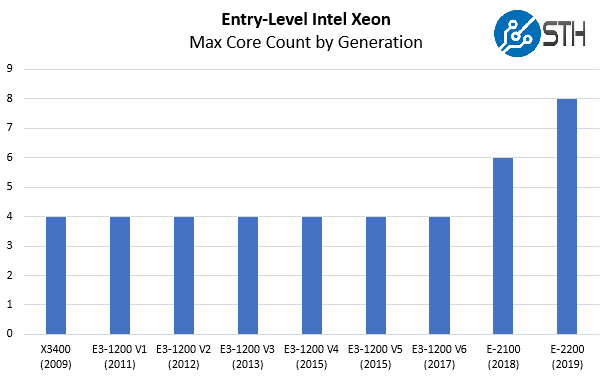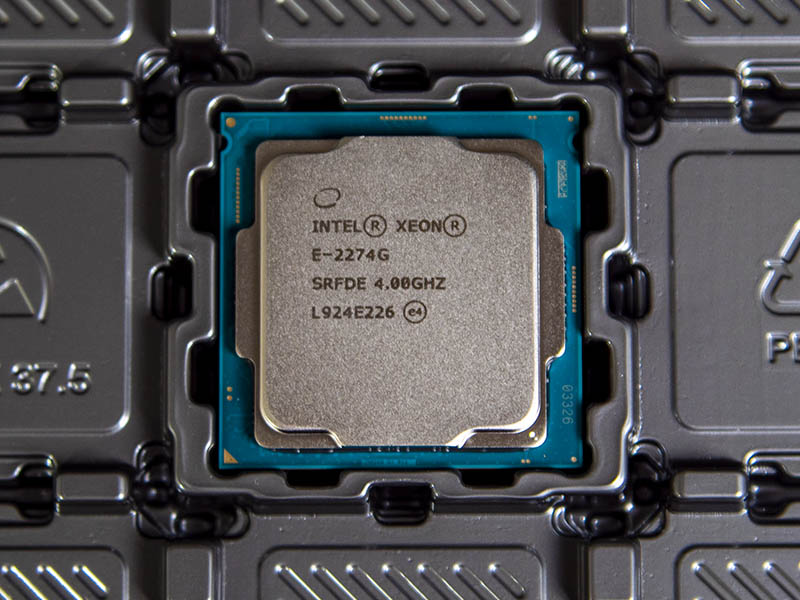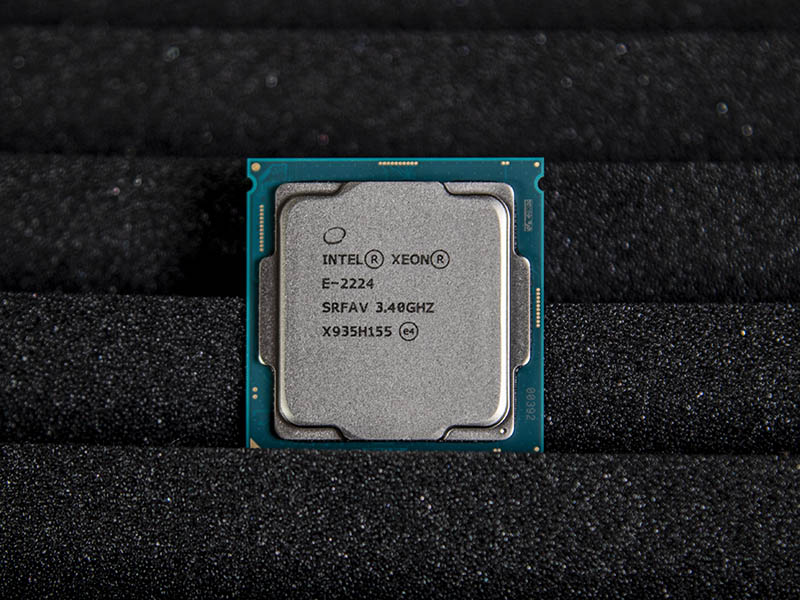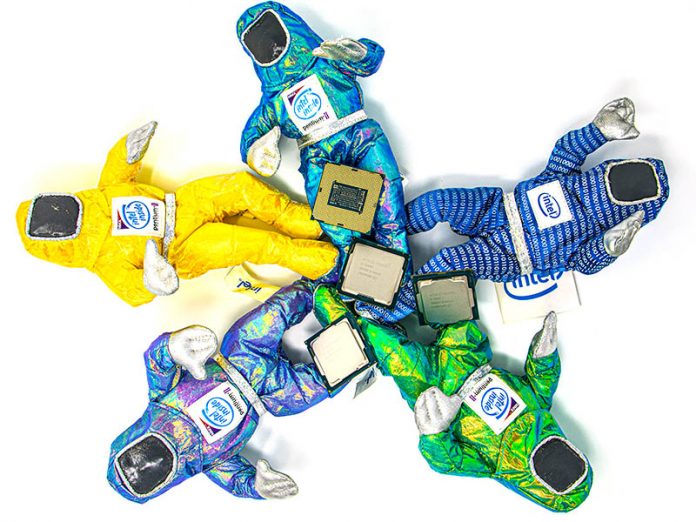In technology, there are few announcements where products are announced and sold in the market by a company and its partners for nearly five months before it is “launched.” Yet here we are with the Intel Xeon E-2200 series server launch. You may recall, the Intel Xeon E-2200 was launched on May 27, 2019 for workstations. Since then, we found out that the Intel Xeon E-2200 would re-launching for servers (although the schedule was longer than anticipated.) Today is the day that we have the same SKUs re-launched for the server market.
Intel Xeon E-2200 Series
We are not going into too many details on the new launch as we have already covered the new chips multiple times. We even have a more complete Intel Xeon E-2200 Series SKU List and Value Analysis that goes into details of the line. The Intel Xeon E-2200 is a drop-in (with BIOS update) replacement for the Intel Xeon E-2100 series. As such, here is the E-2100 and E-2200 SKU stacks in a single table.

As a note here, we do not expect the “M” SKUs to be used in many servers.
Perhaps the biggest headline change here are the Intel Xeon E-2288G and E-2278G CPUs. They each have 8 cores and 16 threads or 33% more than the previous generation 6-core CPU top-end models. For over seven years, these chips were stuck at four cores. We chronicled the lineage in our Looking back at Intel Xeon E3-1200 V1-V6 to the New Xeon E-2100 piece. With the Intel Xeon E-2100 series, Intel moved the core counts up 50% to 6 cores. Now we are getting two more cores in a subsequent generation. Intel has doubled its core counts since the Xeon E3-1200 V6 series.
Putting that into context, here is what the maximum core count growth has been, by generation from 2009-2019 in this segment:

Many will point to adding two cores as being relatively minor in today’s age of 64 core and 128 thread processors, but that misses the point of this market. The Intel Xeon E(ntry) market is designed for basic servers, and those that may need a small memory and I/O footprint but few high-frequency cores. These same platforms take sub $100 CPUs like the Intel Core i3-9100F allowing edge servers, and dedicated hosting offerings to scale. Core counts doubling in this segment means that we are seeing more overlap with the absolute lowest rungs of the 2nd Gen Intel Xeon Scalable series like the Intel Xeon Silver 4208 and the newer Intel Xeon W-2200/ Intel Xeon W-3200 series. That means buyers in the ~8 core realm now have a lot of options even before looking to chips like the AMD EPYC 7232P and AMD EPYC 7262.
Intel Xeon E-2200 Series Naming Convention
Breaking down the SKUs, the “E-2” series is the entry-level Xeon series that mirrors mainstream consumer CPUs adding features like ECC memory. The second “2” means it is the second generation product. The third digit is the performance level. When we see an “8” as the last numeric digit, that denotes the core count of eight cores. That “G” suffix means that a SKU has an integrated GPU.

Overall, this is one of the simpler naming conventions in the industry right now.
Final Words
Alongside this piece, you will see our Intel Xeon E-2288G review going live. Performance is predictably better with additional cores and you will see a performance increase throughout the SKU stack. For customers of the Intel Xeon E-2100 series platforms, adding two cores is a big deal. These are drop-in replacements that offer significantly more performance.

Perhaps the bigger impact is that the new Intel Xeon E-2288G and Xeon E-2278G push into the lower-end Intel Xeon Scalable and the AMD EPYC 7002 series. Both of those offerings have significantly more RAM capacity, PCIe capacity, and scaling options, but if you simply need eight cores, the Intel Xeon E-2220 series now checks that box.
From a market perspective, this is a big deal.
You can find our index for coverage at: Intel Xeon E-2100 and Xeon E-2200 Coverage from STH Your Guide





Can someone speculation how 10nm is expected to compare to E2200’s 14nm architecture?
I want more speed with less heat. Is 10nm going to give that to us? Or is 10nm going to be mostly found in mobile devices?
I’m still unable to find a vendor who will sell me this CPU. What the hell is wrong with Intel? This was introduced MONTHS ago. Not even the nVidia paperlaunches in the good old days were THAT bad.